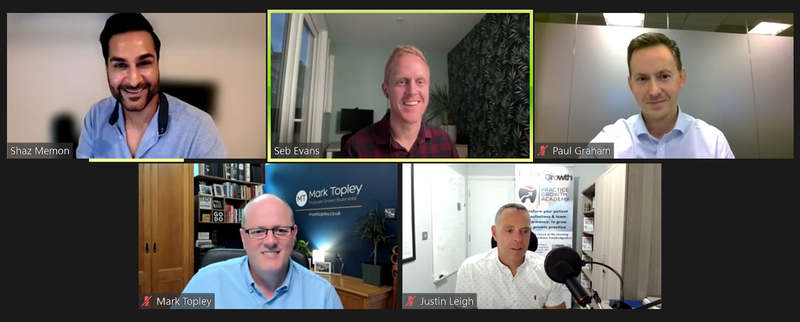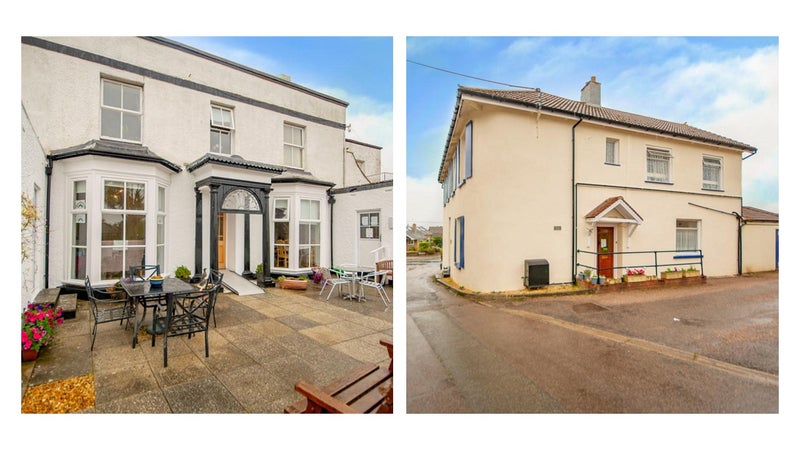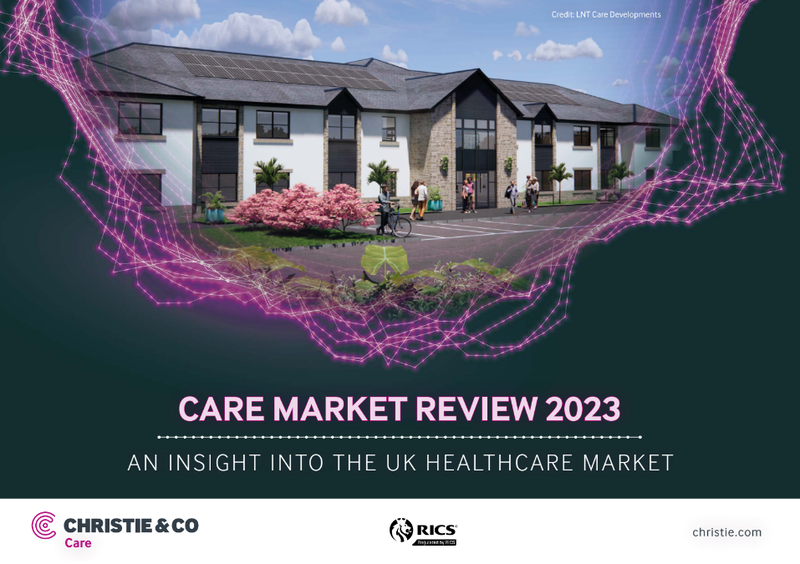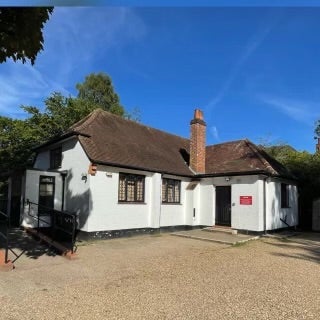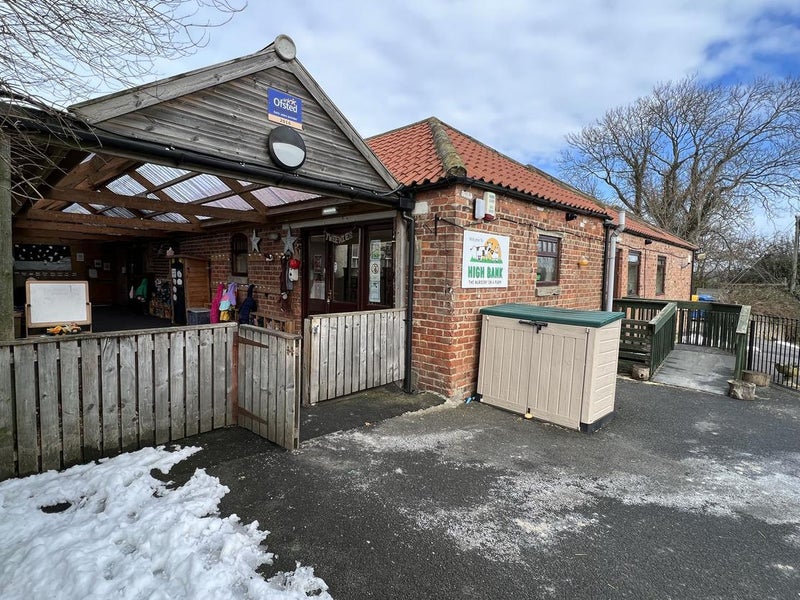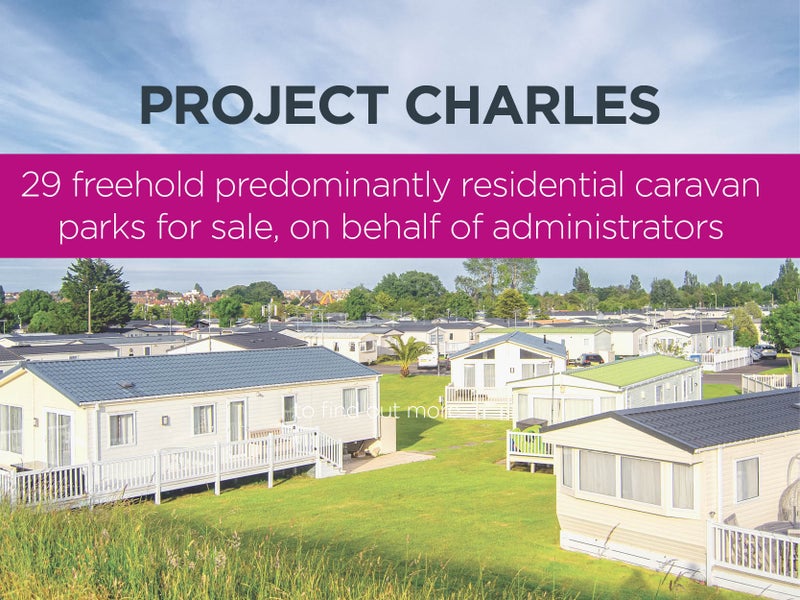Business Outlook 2020: Scotland Regional Focus
Edinburgh and Glasgow remain the focal points of growth in Scotland, with the infrastructure for a prosperous 2020 already in place.

CHILDCARE
2019 mirrored the successes of the previous year in terms of overall activity. The market has performed well against the Brexit backdrop and activity has remained robust. Market and buyer demand remain incredibly buoyant.
The Scottish market remains dominated by the impending early years government policy reform, that will increase the number of funded childcare hours, offered to all three- and four-year olds and some eligible two-year olds, to 1,140 hours from August 2020. As the contract negotiations have progressed the picture is becoming clearer and in the main show signs of a positive outlook for providers.
Buyer optimism continues and is reflected by larger group operators who are looking at growing their portfolios through the acquisition of trading businesses, new build sites and expansion within existing settings. Demand continues to exceed supply, fuelling continued growth in values as competitive tension between eager parties looking to expand or establish themselves shows no signs of abating.
As a needs-based sector, activity and demand in Children’s Day Nurseries remains largely unimpeded by Brexit developments directly.
2020 will see the sector adjust to the extended hours. Many local authorities have yet to confirm what private sector nurseries have been approved for partnership and this has proved a frustration and created uncertainty throughout Scotland.
The impact for nurseries who are not involved in the new contract is unclear but could force the closure of nurseries unable to compete with losing partnership children.
The main challenge for all operators is and will continue to be staff retention and the increasing of the national minimum wage and living wage standards.
In 2020 we will see a select number of premium quality assets coming to the market on a confidential basis, expected to attract significant interest. In addition, there remains mid-market opportunities as operators seek retirement or pursue other business interests.
CARE
2019 has been an outstanding year in terms of brokerage and advisory activity with our team across the UK selling 66% of all the individually transacted care homes in the market. In Scotland for several years we continue to transact in excess of 90% of the market.
The Scottish market in the main is resilient and finding solutions to the continuing staffing and funding challenges that dominate the sector. Activity from specialist funds has created competitive tension in the market for future-proof, compliant assets and vendors are taking advantage of sale prices that are the best they have been for over 12 years.
As care operators have continued to focus on improving quality and operational effectiveness the development of new, purpose-built care facilities has remained a key focus into this year. Activity has also remained high, with investor demand seen from across the industry with private equity, REITs, regional operators and corporate groups looking to consolidate, along with yields continuing to compress.
In terms of key corporate news, Four Seasons Health Care, the UK’s second largest operator dominates the headlines. Following on shortly after the announcement of the FSHC administration and sales process was the successful conclusion of Impact Healthcare REIT’s fund raise. After setting out to raise £25million in equity, the process closed at c.£100million, nearly four times oversubscribed. Christie & Co notes that this outcome further reinforces the strength of the market and investor demand, particularly given the timing relative to the FSHC announcement.
As Christie & Co anticipated 2019 witnessed a continuation of the trend of consolidation in the market.
As a needs-based sector, activity and demand in care remains largely unimpeded by Brexit developments directly, though Christie & Co notes there is a direct impact on staff recruitment, particularly with the current nurse shortage the industry is facing.
Scottish Transactional Activity
Despite the continuing challenges the sector remains filled with opportunity supported by banks, VCT’s and REIT’s. 2019 was an active year at both the top and bottom ends of the market whilst the mid-market continues to be sluggish unless priced correctly.
There is an ever-increasing shift to new developments. The main focus of group operators is to expand via new build, targeting private fees or edging out older less compliant competition. A number of Turnkey sites are already under offer across Scotland as these new builds are set to enter the market over the next 6-9 months. The polarisation of the market continues to stretch as pricing for compliant assets in prime locations has seen competitive processes drive pricing higher than previously achieved. Price per rooms achieved in the last 12 months have been between £10,976 and £210K+.
2020 MARKET PREDICTIONS
• More portfolio M&A activity is likely once uncertainty associated with Brexit is resolved
• New build development and investment activity will remain very active
• A number of group sales processes are likely throughout 2020
• A significant sale and leaseback of a Scottish group is likely to occur
HOTELS
There are robust trading fundamentals across the hotels sector in Scotland. In terms of room supply, occupancy rates, and average room rates performance is excelling, and opportunities exist for a variety of operators in tourist hotspots such as Edinburgh and the Scottish Highlands. Whilst occupancy is strong year-round in the major conurbations, we are seeing clear seasonal demand from tourist locations with strong levels of summer and Christmas bookings in 2019.
Uncertainty surrounding Brexit undoubtedly impacted the market in 2019. We expect transactional activity to increase now that the outcome has been finalised, with the bulk of activity in 2019 driven by existing operators, in part due to the difficulty for first time buyers to access finance. Transactions are likely to be driven by a higher volume of individual rather than portfolio assets in the year ahead, particularly as inbound investment – driven by Asian and Middle Eastern investors – recognises the longer-term value of acquiring bricks and mortar assets in key locations.
Hotels that have not undertaken significant capital investment in recent years are likely to be at a higher risk of becoming distressed during 2020, whilst this will create opportunities for some, values as a whole are likely to remain steady due to the underlying cost pressures across the sector.
In the year ahead a weaker pound may serve to further increase the desirability of the region to overseas investment, as well as having the added benefit of encouraging consumers to spend more of their income share domestically as the attractiveness of staycations grows further still.
RETAIL
Activity in 2019 was notable for the high levels of buyer demand and the resulting strong sales in the petrol filling station market across Scotland. Importantly, this activity has been at both the higher and lower ends of the market with demand for both freehold and leasehold opportunities proving resilient. As both corporate operators and independent buyers seek different calibres of business two key themes remain consistent; location and the ability to add value, which will undoubtedly continue throughout the year ahead. It is interesting to note that recent reports have recorded only modest increases in the sales of electric vehicles, suggesting petrol filling stations will remain relevant and viable for the foreseeable future
Within the convenience store sector, a lack of freehold supply throughout the region is constraining transactional activity, freeholds remain popular with purchasers who recognise the inherent value of bricks and mortar. As with forecourts, location remains key and buyers are in a good position to quickly and accurately assess the potential viability of a business based upon the volume of residents in proportion to the amount of competition in the local area. Throughout 2019 we witnessed a reduction in premiums achieved for convenience stores at the lower end of the market, this can be attributed to a degree of oversupply relative to demand as well as the increasing price sensitivity you might expect, it is fair to expect that this will continue into 2020.
There are early indicators that corporate operators may shift their focus towards ever higher turnover sites both outside of and within their portfolios. If this occurs there is the potential for the emergence of newer regional groups comprised of stores with mid-market levels of turnover, which will in turn serve to increase competition throughout the region.
At present Brexit does not appear to be having a significant impact on Scottish retail, but the same cannot be said for the National Living Wage. As this is increased operators will need to monitor costs closely and decide on where to absorb them and where to pass them on to consumers – this will likely be a challenge in such a price-sensitive market.
The modest uplift in average retail prices should reassure sellers, potential purchasers and investors alike of the sector’s continuing growth and attractiveness.
PUBS & RESTAURANTS
2019 proved to be challenging across the restaurants sector with pubs performing more strongly, and Scotland is by no means immune to this. The changing face of town centres has been a critical factor for some operators and a degree of nervousness regarding the outcome of Brexit can be felt across the region, with many buyers seeking clarity before making decisions regarding investment or divestment from the sector. Cash buyers in particular are keenly aware that the potential distress resulting from an unfavourable Brexit outcome may in fact create opportunities to acquire prime assets at reduced premiums, and this is certainly a factor to watch in 2020.
Whilst there have been turbulent times for the sector, individual operators and large groups continue to grow and expand. Restaurants which continue to push the boundaries both in terms of quality and customer experience seem to be performing well against mass chains.
It is becoming clearer than ever that location is critical, and that demand will persist for sensibly priced freehold opportunities within prime areas. This is not always necessarily true for leaseholds. The high leasehold premiums and rents sought by landlords are beginning to appear more and more out of step with the market, particularly in the case of restaurants where margins are slim, and risks are high. However, there are some notable bright spots. We sold a portfolio of five bar & restaurants all leasehold across Glasgow and Edinburgh to a Southern based investor and brewery. This is showing a strong demand for well-located and established sites with healthy turnover levels.
As with any sector that is dependent upon people, changes to the National Living Wage have and will continue to have an effect across pubs & restaurants in Scotland. The challenge for operators will lay in retaining and developing the staff that they have whilst also managing the increased costs. Several successful pub operators have already mitigated against this through consolidation into larger, more efficient premises.
The perceived risk of the wider hospitality sector has led to a number of mainstream lenders revising their criteria and, in some cases, exiting the sector entirely. That said, we are pleased to report that in their place a raft of challenger lenders has emerged who recognise that with risk comes reward and access to a range of funding options remains available for the majority of buyers and operators.
The significant uplift in average pub prices and the relatively constrained reduction in average restaurant prices reinforces the opportunities for sellers, potential purchasers and investors alike across the sector.
PHARMACY
2019 was a pivotal year for the pharmacy sector in Scotland. Although across the nation 2019 proved to be a difficult year for the sector, this has been our best ever year selling pharmacies in Scotland and the highest prices we have ever witnessed. Our deals agreed amounted to a total value of £20,000,000 for the year.
When viewed within the context of the wider primary healthcare network, pharmacies have undoubtedly increased in importance over recent years, and this is likely to continue. For commercially minded operators this creates opportunities to widen their ancillary offerings to include services such as travel clinics and flu jabs that would historically have been offered at GP surgeries, with a view to driving non-dispensing revenues.
Current market conditions are driving disposals from corporate operators who are re-evaluating their existing portfolios and rationalising where they deem individual sites to be unviable relative to their often-stringent criteria. This is creating opportunities for new entrants and first-time buyers who recognise the potential that these pharmacies offer, and this in turn is driving strong demand for these assets. A salient example is when Christie & Co concluded the sale of Hand Pharmacies in Glasgow. These two pharmacies on the same road have a combined dispensing of 14,000 NHS items per month and a combined turnover £2,430,000 per annum. There were five bidders and the price achieved in terms of pence in the pound is the highest we have ever heard of in the market.
We predict a ongoing steady flow of pharmacies coming to market in 2020 as prices remain high. Higher value pharmacies of £2.5m or more are likely to cool a little as less buyers can afford this level. Within the context of the recent funding announcement we are seeing increasing numbers of single site operators, often approaching retirement, who are expediting their exit plans rather than seeking to adapt. We would expect to see continued consolidation in the year ahead, which presents opportunities for new entrants to the sector.
DENTAL
The dental sector performed strongly across Scotland in 2019, with attractive assets continuing to harvest impressive multiples. Our market presence and transactional activity notably increased by 156.3% since 2015, reflecting a growing team and a more sophisticated and regionally diverse market. The strength of our regional team aligns with the fact that 85% of independent buyers acquire a practice within 50 miles of where they live.
2019 saw the continued expansion of medium sized and corporate groups in Scotland. However, the whole buyer pool remains active with first time buyers, single site operators and multiple operators fuelling activity. 2019 saw a 22% increase in transactional activity vs 2018.
Christie & Co concluded the sale of Brian Easton Dental in Linlithgow, a four-surgery practice with scope for expansion. This well-established fully NHS practise was sold off market directly to the practice associate. Premium prices are achieved when prominently located mixed practices come to the market and we have witnessed a steep increase in demand for private practices.
That said, the sector is not without its challenges. There is increased sensitivity with regard to the pricing of practices in rural areas where a shortage of Associates and NHS underperformance can be an issue. Furthermore, Associates are working shorter hours across the region in order to achieve a more desirable work/life balance which presents its own workforce complications. On top of this the retendering of NHS orthodontic services is rendering contracts worthless until secured and as negotiations regarding reforms to NHS contracts continue it may be that operators have to work harder for the same revenue, though we do not expect to see the effects of this in the immediate term.
As we look ahead in 2020, we anticipate that the differential in prices paid for NHS and private practices will narrow substantially as operators look to diversify. For those operating mixed practices the NHS contract reforms are likely to accelerate their exit strategy. Operators may also seek to add value by branching out into new, complimentary disciplines such as the provision of cosmetic dentistry and beauty treatments. Overall, we would expect operators with private equity backing, both new and existing, to continue to drive the market forwards.
